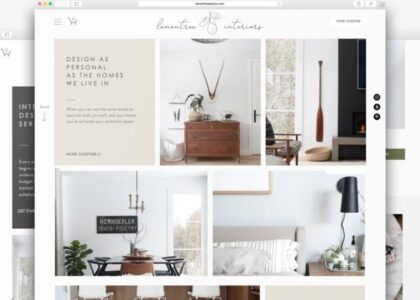Do you wish to start a clothing design business but lack the necessary funds? Starting a clothing company on a shoestring budget is not difficult with good strategy and persistence. In this post, we will outline the procedures you must take to launch your clothing brand with little to no money and no expertise.
1.Choose a specialty
Establishing a clothes business is a deeply personal endeavor. You're undoubtedly a highly creative individual with something unique to contribute in a fast-paced field. You've probably identified a huge market gap or have a distinctive design in mind for a certain target segment.
Regardless of your motivation for beginning a business, it's critical to define your specialization from the outset. Do you want to know how to create a fitness apparel company or a sports clothing line, for example? Maybe you want to establish a following for a single item, such as the world-famous Fred Perry shirt.
It might also be a clothing company that is founded on a specific grounded need or concept, such as cruelty-free apparel or socks manufacturer.
Understand and remember your specialization. Even if you spread out and launch several different ideas throughout time, your initial concept provides you with a legacy, a guiding principle, and a cause to be recognized.
2.Recognize your market
Understanding the industry and the market is critical to success. This includes researching the competitors, possible consumer base, and growth prospects. Consider whether there is a specific market need. What can I design that people will want to wear? Find your inner passion and turn it into a profitable company.
3.Understand your target market
Understanding your consumer is an important step before starting a clothes business. Identify and categorize your potential clients based on their characteristics, such as age, marital status, whether they purchase online or in stores, and so on. This understanding may make or destroy the launch of your product.
4.Build your budget or business plan
If you're working on a low budget and testing your concepts on a small scale, you might not need a full-fledged working business plan to get started. However, if your concept takes off, you'll want to scale rapidly, so it's a good idea to retain even a rudimentary plan in the background.
A typical question is 'what does it cost to start a fashion brand?' While it is conceivable to establish a clothing line for a few hundred pounds, it is far more likely to cost thousands. According to make it British, 50% of businesses spent more than £15,000 to launch their UK-made brands.
Remember that the fashion sector is notoriously tough to forecast. Plans will need to be immensely flexible, and there are no assurances, so you must be willing to take on the task.
5.Select a brand name
The perfect brand name, combined with a logo, slogans, and taglines, may make or break your company. What type of initial impression do you want to leave? Customers choose companies that are one-of-a-kind and convey a narrative. Always choose terms that are clear, detailed, and easy to recall.
6.Make your designs
Product creation is one of the most enticing stages of any apparel business. Even if you only have a conceptual design for one item in these early stages, start drawing it out on rough paper or on the iPad screen. When you're fully ready, convert your basic ideas into detailed digital drawings. Adobe Illustrator, for example, can handle a lot of the heavy lifting for you.
After you've completed your draft sketches, you'll need to consider your 'tech pack,' which is the crucial information you'll provide to your manufacturer. It must include your product's characteristics and technical specifications, from layout and measurements to ingredients and any additional accessories or features.
Following that, you'll need to begin pattern design making and grading before locating a manufacturer.
7.Lookup a clothing manufacturer
The necessity of selecting a trustworthy clothes manufacturer cannot be stressed if you want to launch a clothing company; it is vital to success. Fortunately, the internet makes it simple to locate a clothing manufacturer for small businesses by searching online creator listings, forums, social media, and so on. Depending on your needs, you can engage freelancers, outsource to a local manufacturer, manufacture the goods overseas, or use print-on-demand services. Understand the capabilities of your garment manufacturer, including quality, manufacturing time, specialized, and minimum order needs. To select the best manufacturer, thoroughly analyze the benefits and downsides of each.
8.Examine the product's quality
Always buy samples to ensure that the product is robust, visually acceptable, can endure several launderings, and generally satisfies your brand's quality requirements. Remember that the quality of your product defines your reputation; it is preferable to spend a slightly higher price for a high-quality product rather than jeopardizing your reputation to save a few bucks.
9.Create a website
A well-designed, eye-catching, and accessible website is required to establish a clothes business. Your website is one of the most visible components of your company. It's easier than it seems because most eCommerce platforms, such as Shopify, Etsy, and WordPress, provide excellent ready-made layouts. Create a beautiful website that inspires trust, expresses your vision, and entices people to explore around to highlight your items. The website will act like a virtual boutique for your clothing brand.
10.Value your products correctly
The key to success is correctly pricing your things. Establishing a pricing range that covers your manufacturing costs without alienating your customers is a balancing act. Create a clothing line that is fair to everyone – aim for a happy middle.
11.Try out your product
Looking to put your trial run design to good use? Taking them to market might be a terrific method to test your product without having to commit to a complete production run. Markets, college carnivals, and online platforms like Facebook Marketplace may be wonderful locations to start, taking down notes and asking your consumers for input on the products and anything else they're searching for all the time.
You'll explore that the market research stage never truly ends since you'll constantly add new goods to your range and determine what sells and doesn't.
Take feedback as a sort of company money and a tool to accelerate your growth; therefore, use it to improve your wonderful goods.
12.Introduce your product
You've tested your item, it's selling well, and you're ready to purchase your first complete batch. It's time to get really profound about marketing your goods, and you'll need to make a few decisions before you can do it successfully.
Follow this checklist:
- Price your goods
- Promote your brand
- If this is your prime motive, set up an online apparel business.
- Organize any special offers or packages
- Assemble your products
- Deliver your products (if working on an order basis)
- Handle any returns or consumer complaints
- Plan ahead of time with your manufacturer for new seasons and peak times.
- Maintain stock levels and provide an efficient ordering procedure
- This may be all in your company strategy, but double-check is a good idea.
13.Begin promoting and selling
First, build significant brand recognition by advertising on social media, launching campaigns, and telling YOUR story. Make it simple and attractive for your audience to share the material, regardless of your marketing plan. Second, establish sales and distribution targets. It may be good to talk with industry experts. Third, look for ways to expand and attract funding if you've met your sales targets. A classic approach would be to find a company partner who can give cash in exchange for a portion of future earnings.
14.Managing your money
The most critical aspect of launching your firm is understanding your financial requirements.
You must budget for the expenditures that you will incur when running your firm.
Also, don't forget to include unforeseen money that might be used if such an incident occurs.Make a three-year revenue strategy outlining your costs and expected revenues. This would be really handy when looking for funding for your startup.
15.Increase the size
You've completed the task. You've established your clothes firm, made your first sales, and are ironing out the seams. As a motivated business owner with plans for additional items or larger orders, scaling may be on your mind.
Before committing to any major next actions, take some time to reflect on how your firm is doing. In fact, it's better to start humble and easy for the first few seasons, getting to know the realities of manufacturing, supply chain optimization, and fulfillment before taking on the next challenge. Your company strategy may represent your expected development timetable, but remember to remain adaptable.
Your initial task may be to hire your first employee to assist you with all of the above.
16.Maintain your motivation
Must not lose motivated if your firm does not make a lot of money in the beginning. Everything requires a specific moment to reach and generate publicity among its target audience. As a result, offer your company some breathing room.
Finally, we believe that with proper preparation and hard effort, one may successfully develop a market for their goods in the garment sector.
Conclusion
As you can see, launching a clothing brand is not an easy undertaking. However, we have simplified the procedure and now allow anybody to establish a clothing line with minimum money – keep reading, and we'll show you how!





